

The third day of my Canadian trip took me north to the national capital of Ottawa. This is a city that often seems to fly under the radar, especially for non-Canadians who focus more on Toronto and Montreal. Ottawa is the fourth-largest city in Canada and contains all of the political institutions that would be expected of the capital as well as a series of excellent museums to explore. The city was chosen as the national capital by Queen Victoria in 1857, and the location was selected for highly symbolic reasons, with Ottawa sitting directly atop the border between Ontario and Quebec, linking together the English-speaking and French-speaking parts of the nation. Although getting up to Ottawa can be a bit of a trip, this is a unique place and a lot of fun to visit for those who enjoy history.


As I just mentioned, reaching Ottawa requires traveling a little bit out of the way. Unlike the other major cities in Ontario and Quebec provinces, Ottawa lies outside of the Saint Lawrence river valley and sits about 60 miles / 100 kilometers to the north. (It sits instead on the Ottawa River, the one that divides the two provinces.) I woke up early this morning for the surprisingly long drive up from Toronto, which lasted about four hours in total. The trip took me along the northern shore of Lake Ontario for the first half of the drive, through the attractive small city of Kingston, an early capital of Canada where I would have stopped if I had possessed more time, and then finally swung north out of the Saint Lawrence valley towards Ottawa itself. That portion of the trek on Canadian highway 416 felt like the wilderness, mostly forest with only a few small towns for stops along the way. This was not true wilderness though, not this close to the major population centers of the country. That would be coming a few days later on this trip.
I was able to park my car at the hostel where I was staying in the Sandy Hill district on the eastern side of Ottawa. The first place that I happened to come across was ByWard Market, one of the historical markets that dates back to the earliest days of the city. This was a hub for the lumber trade in the 19th century, and the market that stood on this spot was built and rebuilt over the years. The current market is the fifth one to occupy the area, and on this Wednesday morning it was selling an assortment of baked goods and fresh produce. There were also several flower vendors, one of which I captured above. This wasn't too high on my list of destinations to see in the city, so I hurried on towards the more significant sights.




A more impressive attraction was this imposing building, the Fairmont Château Laurier hotel. This was one of the many Fairmont properties scattered around Canada, luxury hotels that date back to the late 19th and early 20th centuries that cater to wealthy visitors. This particular building was constructed in 1912 and holds 429 rooms; it looks like a castle and can easily be confused for a government building of some kind. The Fairmont Château Laurier has been designated a national historic site of Canada, and has become today a popular tourist sight of Ottawa. The location of this hotel couldn't be much better, situated next to the Rideau Canal and only a stone's throw away from Parliament Hill. I found that the hotel staff had no problem with visitors poking around inside and taking pictures, which appeared to be expected at this hotel. Lots of people stop inside to take a look at the sumptuously decorated interior, with its wood paneling and marble columns. At the time of writing this in 2018, the cheapest rooms were going for about $200 per night, and many of the rooms were a lot more expensive than that.
I also noticed these decorations on the street lamps celebrating the War of 1812. I suspect they had been put up the previous year for the 200th anniversary of the war's outbreak, and continued into 2013 since the war lasted for more than three years. I was amused to see that one of the two figures commemorated on this lamp was Laura Secord, the Canadian version of Paul Revere who walked 20 miles out of American-occupied territory in 1813 to warn British forces of an impending American attack. Laura Secord is a Canadian national hero and known to every schoolchild in the country, but few Americans have ever heard of her. For that matter, the War of 1812 was a defining moment in forging Canadian national identity and receives far more attention in Canada than the afterthought place that it holds in American history. Little symbols like this are one of my favorite things about traveling, experiencing firsthand how events are remembered differently even in otherwise very similar countries.
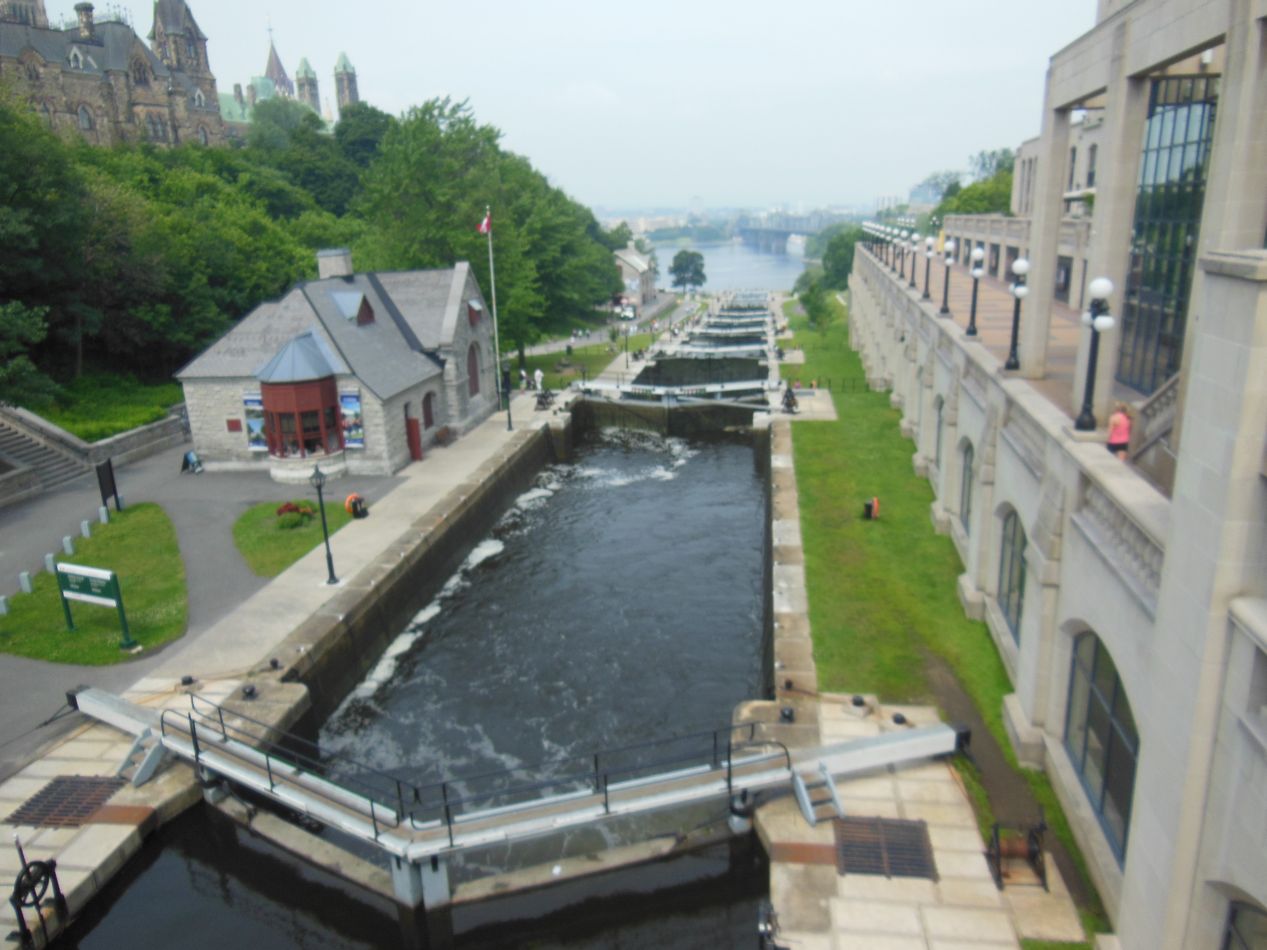

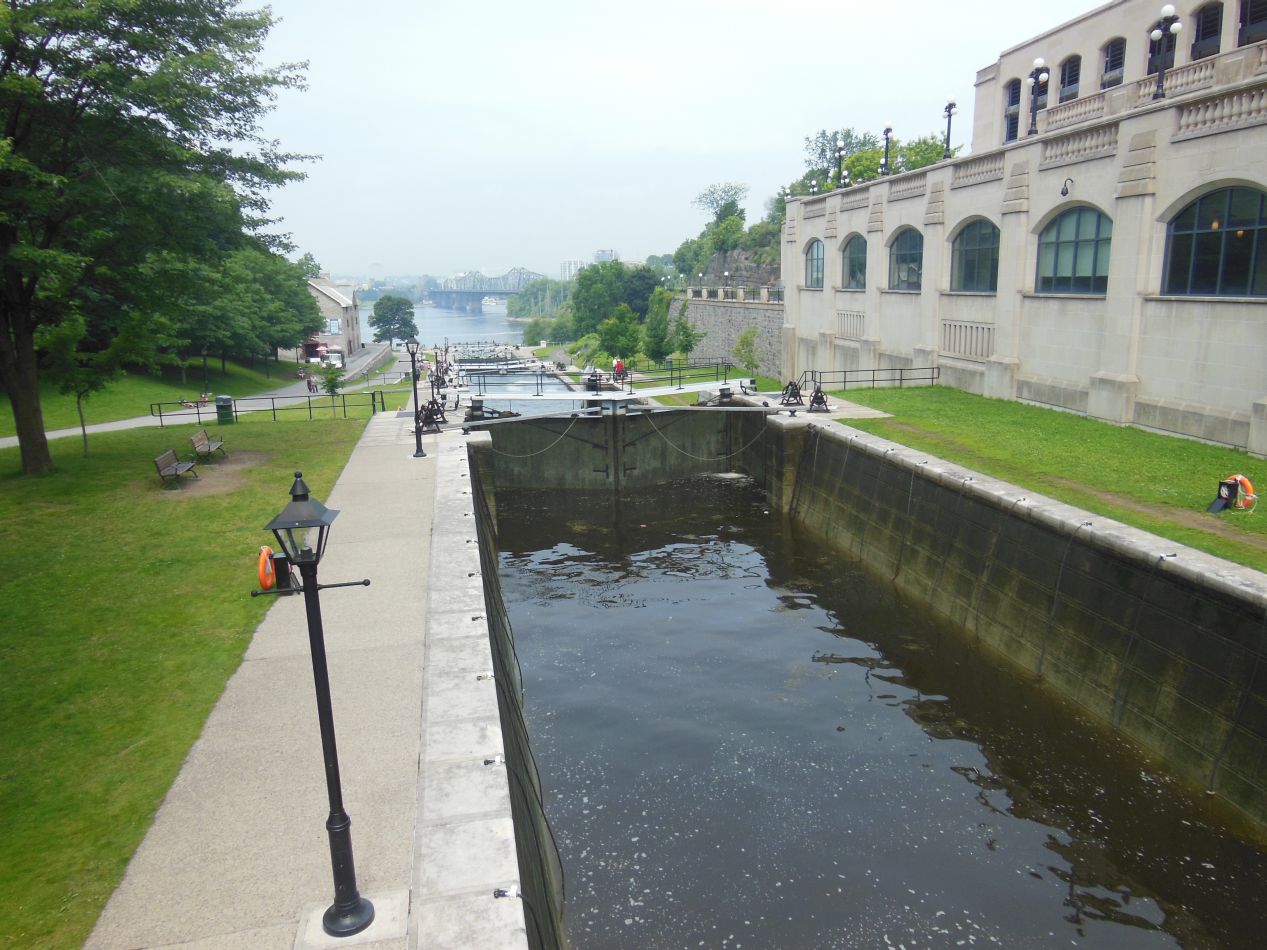

I crossed over the Rideau Canal next, one of the most famous and unique features of the city of Ottawa. The Rideau Canal stretches all the way from the Saint Lawrence River up to Ottawa, about 125 miles (200 kilometers) in length. It was built with great difficulty and use of manual labor following the War of 1812, intended for use in defending Canada against attack from the United States. As many as a thousand workers may have died during its construction in the 1820s. For better or for worse, the canal was never used for military purposes, and it turned out to have only limited commercial use as canals gave way to railroads in the following decades. Although the Rideau Canal was never used for its intended purposes, it became very popular with pleasure boats and eventually became a national historic site operated by the Canadian park service. The section of the canal that I was seeing here was the northernmost extremity, with the Ottawa Locks serving as the final elevation change before reaching the Ottawa River. I had the chance to watch a boat pass through the locks and it was really neat to see the water draining away as the boat was lowered down to the level of the river. By the way, the canal freezes in the winter and becomes a popular skating area that stretches for 5 miles in length, one of the longest in the world. Here's a picture showing what that looks like, and I would love to try skating here someday.
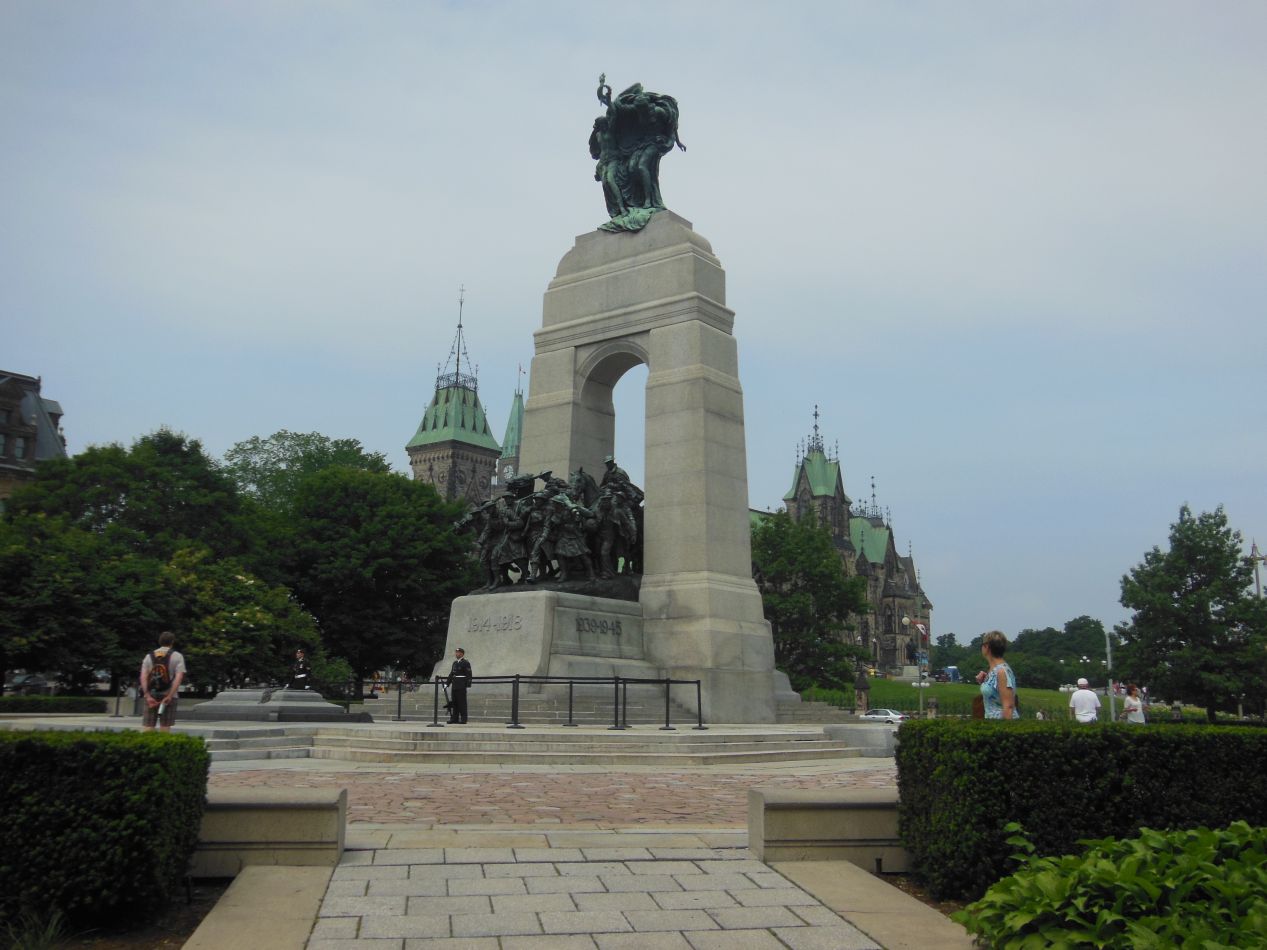

Standing next to the Rideau Canal on the western bank is the National War Memorial of Canada. This memorial arch of granite was originally designed to memorialize soldiers from the First World War, then was later updates to include fallen soldiers from World War II, the Korean War, and the conflict in Afghanistan. A tomb to the unknown soldier was added in 2000 to symbolize the sacrifices made by all Canadians who have died or may yet die for their country. This memorial is the focal point each year of Canada's Remembrance Day ceremony, held on November 11th to commemorate all those who have served in the military. The National War Memorial is guarded by two active duty soldiers, and this monument was in the news after I visited when a deranged gunman shot and killed one of them in October 2014. This is a solemn location for quiet reflection located in the shadow of Parliament Hill.


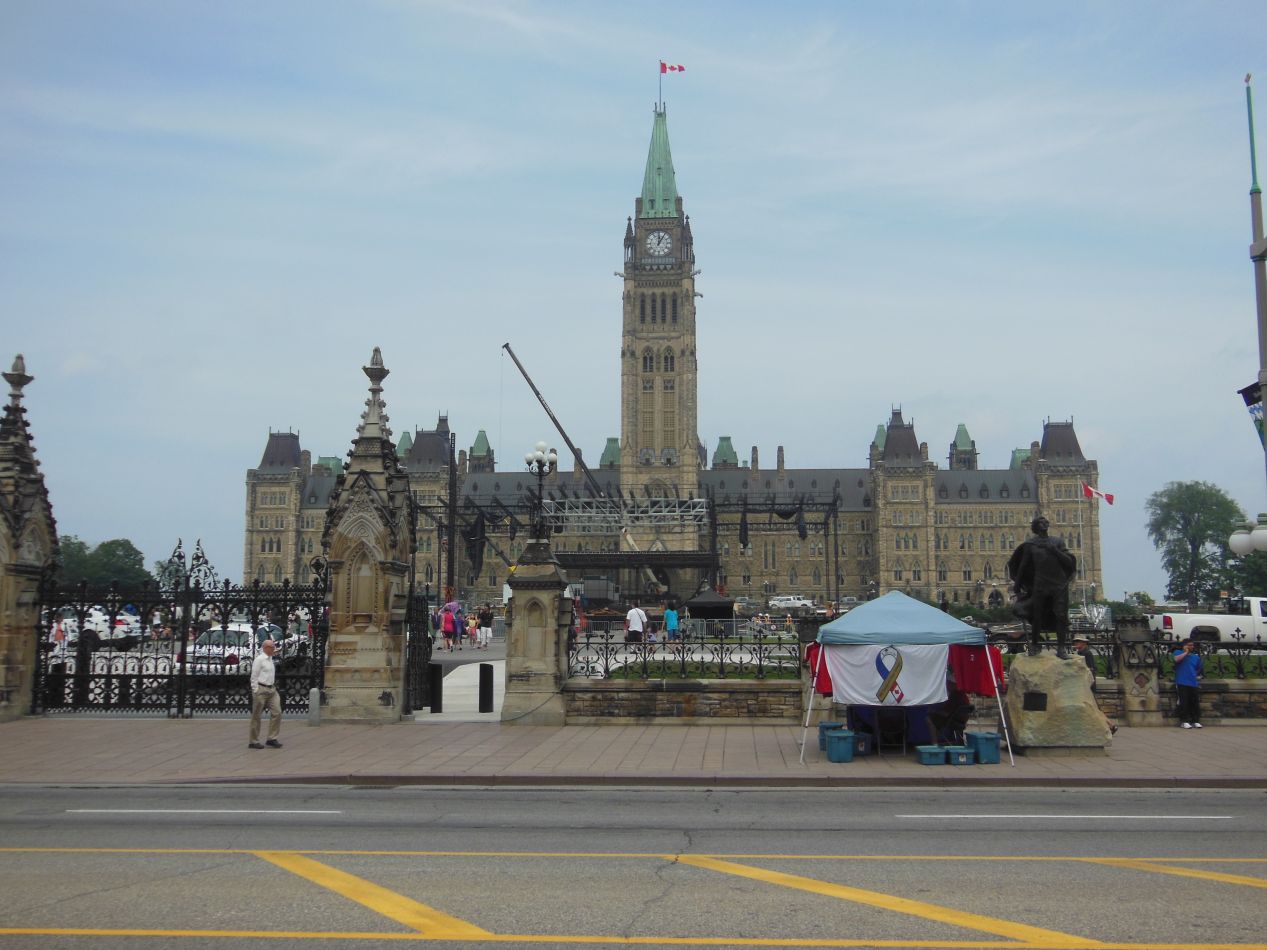

The nexus of the city of Ottawa is Parliament Hill, which sits atop the highest elevation in the area. Parliament Hill gets its name from the Parliament of Canada, the huge Neogothic structure that serves as the legislative body for the nation. Originally the location of a military base overlooking the Ottawa River, this hill was selected as the spot to hold the Canadian Parliament following Queen Victoria's decision to make Ottawa the national capital. The design of the building was an intentional imitation of the British Parliament in Westminster, with much of the construction taking place during the 1860s and 1870s. This was during the Victorian period when Gothic revival was a popular architectural style, and both the British and Canadian Parliament buildings decided to follow in that trend, ending up looking like big cathedrals. There was a serious fire that broke out in 1916 and destroyed a good portion of the central building, which then had to be reconstructed in the following years. Parliament Hill contains two other large buildings that flank the main Central Block, known uncreatively as the East and West Block, which each contain ministers' and senators' offices as well as meeting rooms and other administrative spaces. There are also lots of statues all around the grounds on Parliament Hill, depicting some two dozen famous figures from British and Canadian history.
My pictures of the buildings were somewhat marred by the presence of a huge stage in front of the Central Block. It had been set up for the Canada Day celebrations two days earlier and workers were still in the process of taking it down. I worked around it as best I could with limited success. I did capture the Centennial Flame located in front of the parliament buildings though, which was dedicated in 1967 to mark the one hundredth anniversary of Canadian Confederation. This was intended to be a temporary addition to the grounds before proving popular enough to become permanent. Incidentally, there was also a huge outdoor yoga class taking place on the lawn when I passed through, with several hundred people taking part. Not something that I expected to see when I planned my trip to Parliament Hill!


Entrance to the Parliament of Canada takes place through guided tours, and I reserved a spot on one departing a few hours later in the day. In the meantime, I continued walking west and passed the Supreme Court of Canada. The highest judicial body in the country was located a short distance away from the legislative buildings and did not appear to be a major tourist attraction. There was virtually no one else around inside the high-ceilinged entry chamber of the Supreme Court building. There was a picture of the nine judges who sit on the Supreme Court, and I won't try to pretend that I understand the process by which they are selected for their role. Interestingly though, it's required that three of the nine judges must be from Quebec due to the fact that the French-speaking province uses civil law instead of common law for its judiciary system. I imagine that requirement has led to some fun disagreements over the years. The Supreme Court does offer tours of their building, but this was one place that I couldn't see in more detail due to lack of time. It was a situation where I could either take this tour or visit my next destination, and I opted for the other choice.
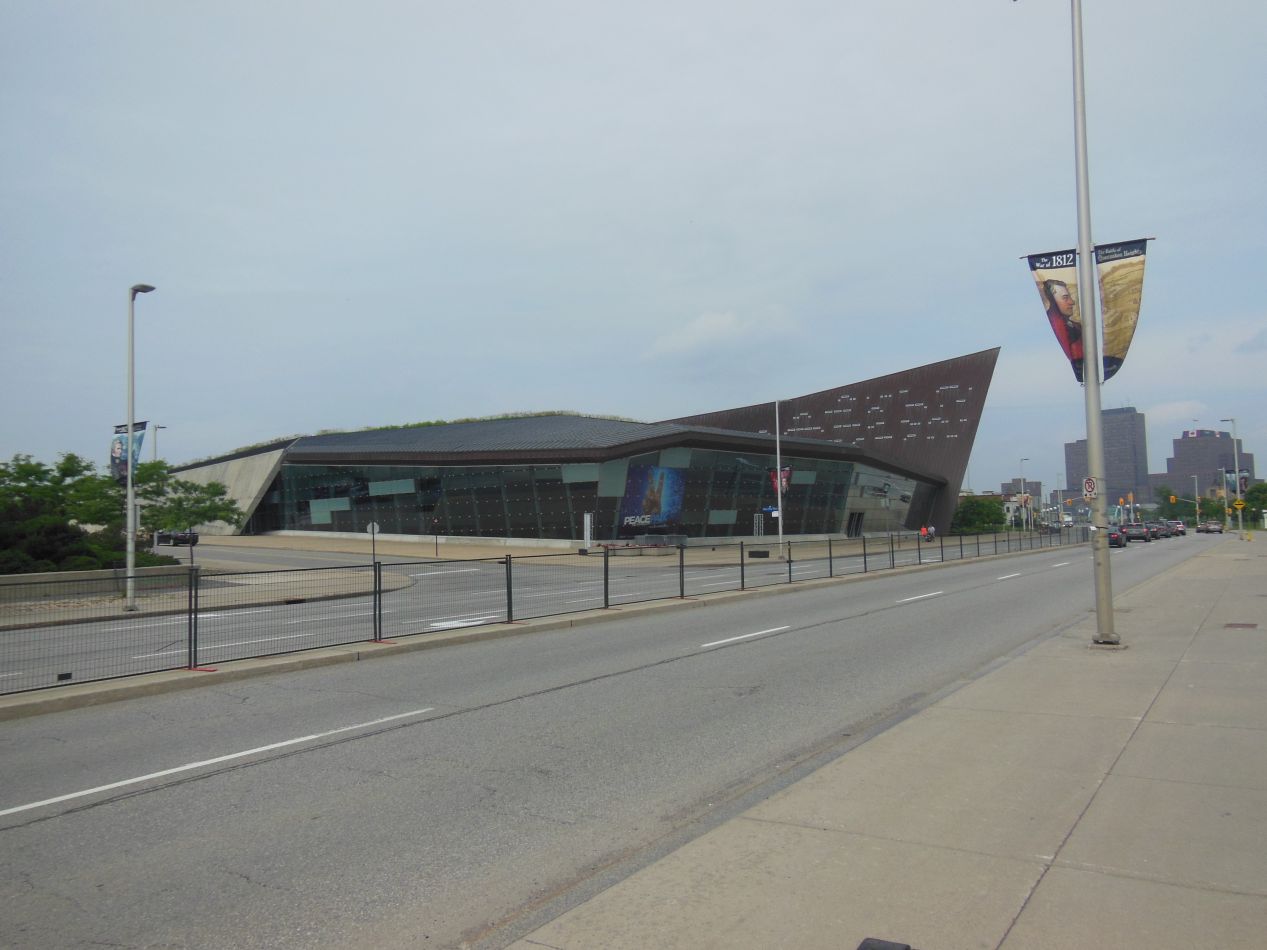
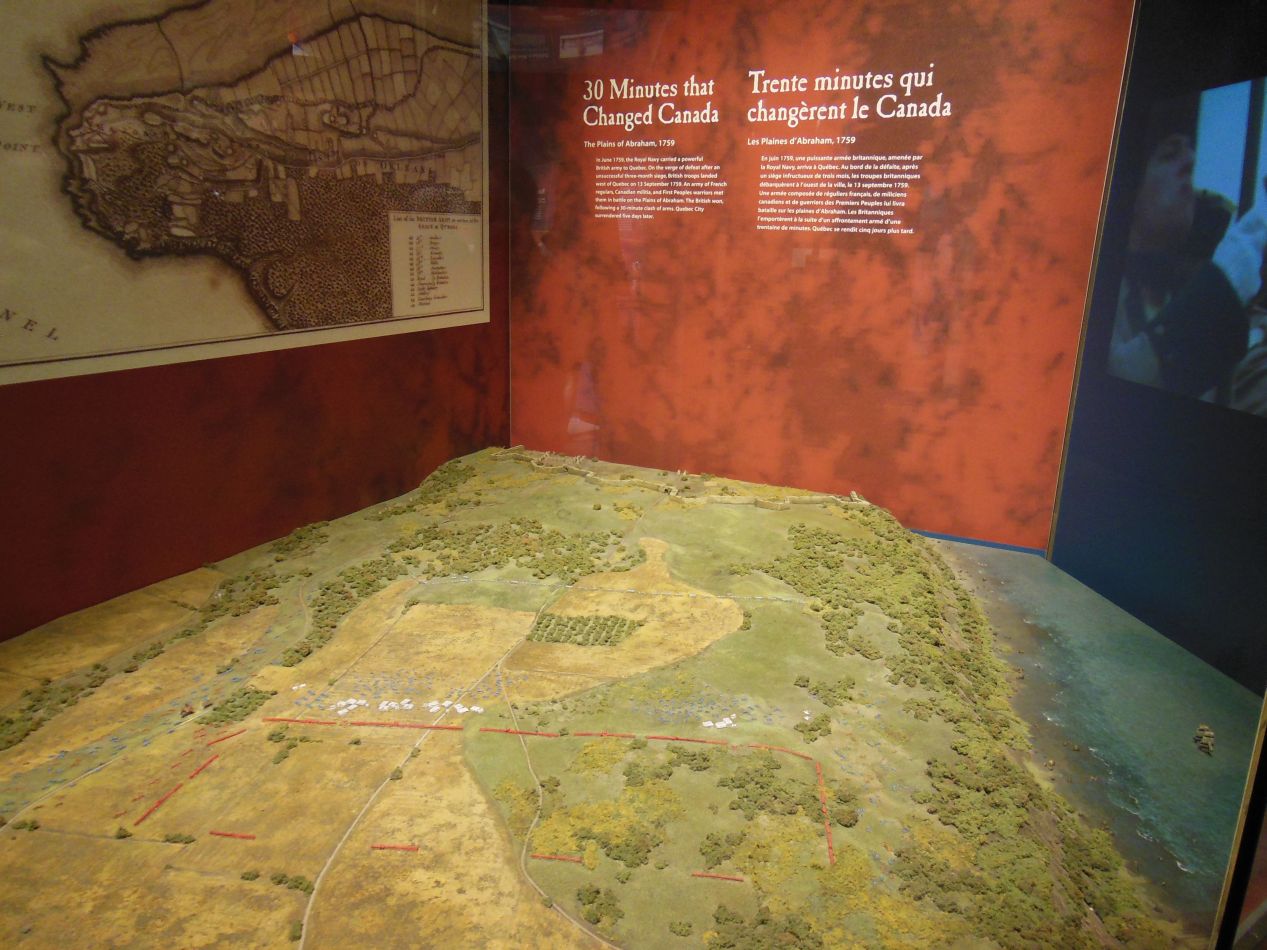
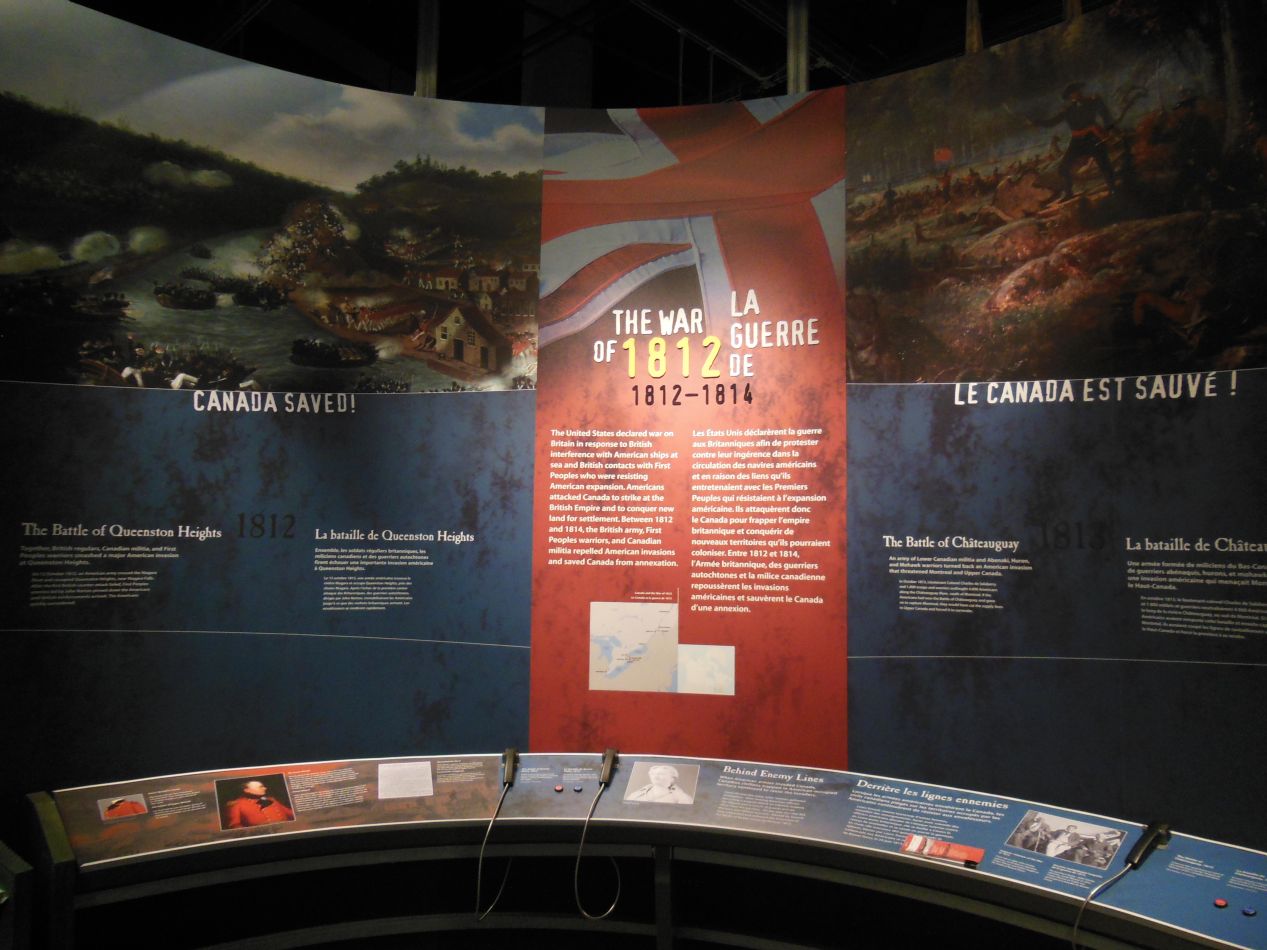

That destination was the Canadian War Museum, a museum dedicated to the martial exploits of the Canadian people. This is actually one of the oldest museums in Ottawa and dates back to 1880, although the current building pictured here only dates from 2005. The museum was located a little bit outside the city center proper of Ottawa, although for someone with my background it was worth the hike. I not only enjoy military history, I've actually taught the subject in college classrooms while working on my history Ph.D., and this was an opportunity that I couldn't pass up. The galleries are organized chronologically starting with the Anglo-French wars of the 18th century when Canada as we know it (i.e. not New France) first emerged. I particularly liked the overhead display of the Battle of Quebec; I was heading to Quebec City in a few days and eager to see the battlefield for myself in person. Then there was the section on the War of 1812, which told the story of Canadians bravely fighting off the American invasion, ending with "Canada Saved!" Let me tell you, that was definitely not how this conflict was described in my grade school textbooks in the USA.  The War of 1812 was almost always depicted as a response to British impressment of American sailors. The repeated attempts to invade British Canada, and the fervent land speculation that lay behind those invasions, they never seem to come up outside historical scholarship. For that matter, the fledgling United State also unsucessfully invaded Quebec in 1775, even capturing the city of Montreal temporarily during that campaign, something that maybe 1 out of 100 Americans know about. Back in the 1820s, in the wake of multiple American invasions of Canada, there was good reason to build the Rideau Canal as protection against a potential future American attack.
The War of 1812 was almost always depicted as a response to British impressment of American sailors. The repeated attempts to invade British Canada, and the fervent land speculation that lay behind those invasions, they never seem to come up outside historical scholarship. For that matter, the fledgling United State also unsucessfully invaded Quebec in 1775, even capturing the city of Montreal temporarily during that campaign, something that maybe 1 out of 100 Americans know about. Back in the 1820s, in the wake of multiple American invasions of Canada, there was good reason to build the Rideau Canal as protection against a potential future American attack.
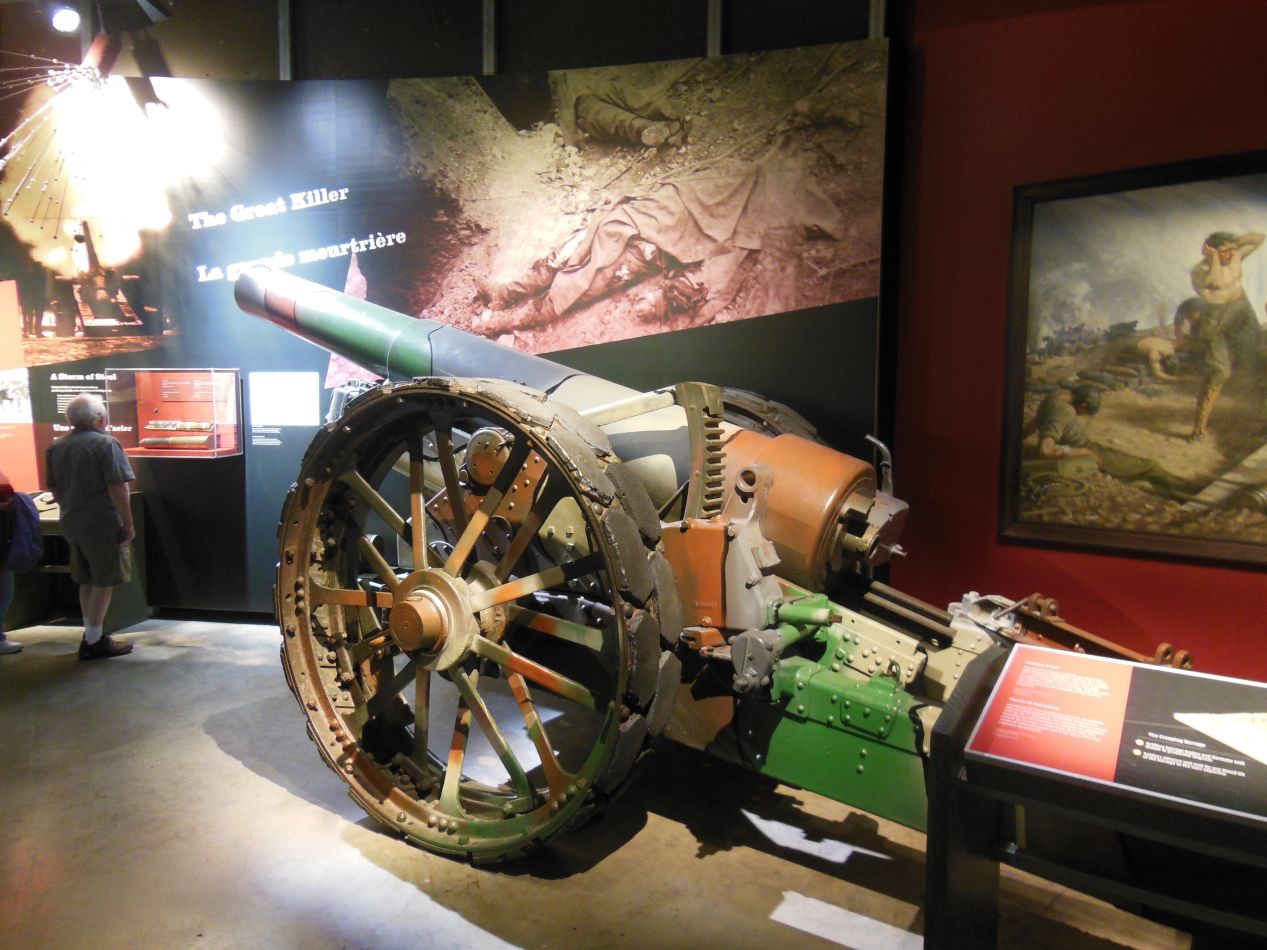
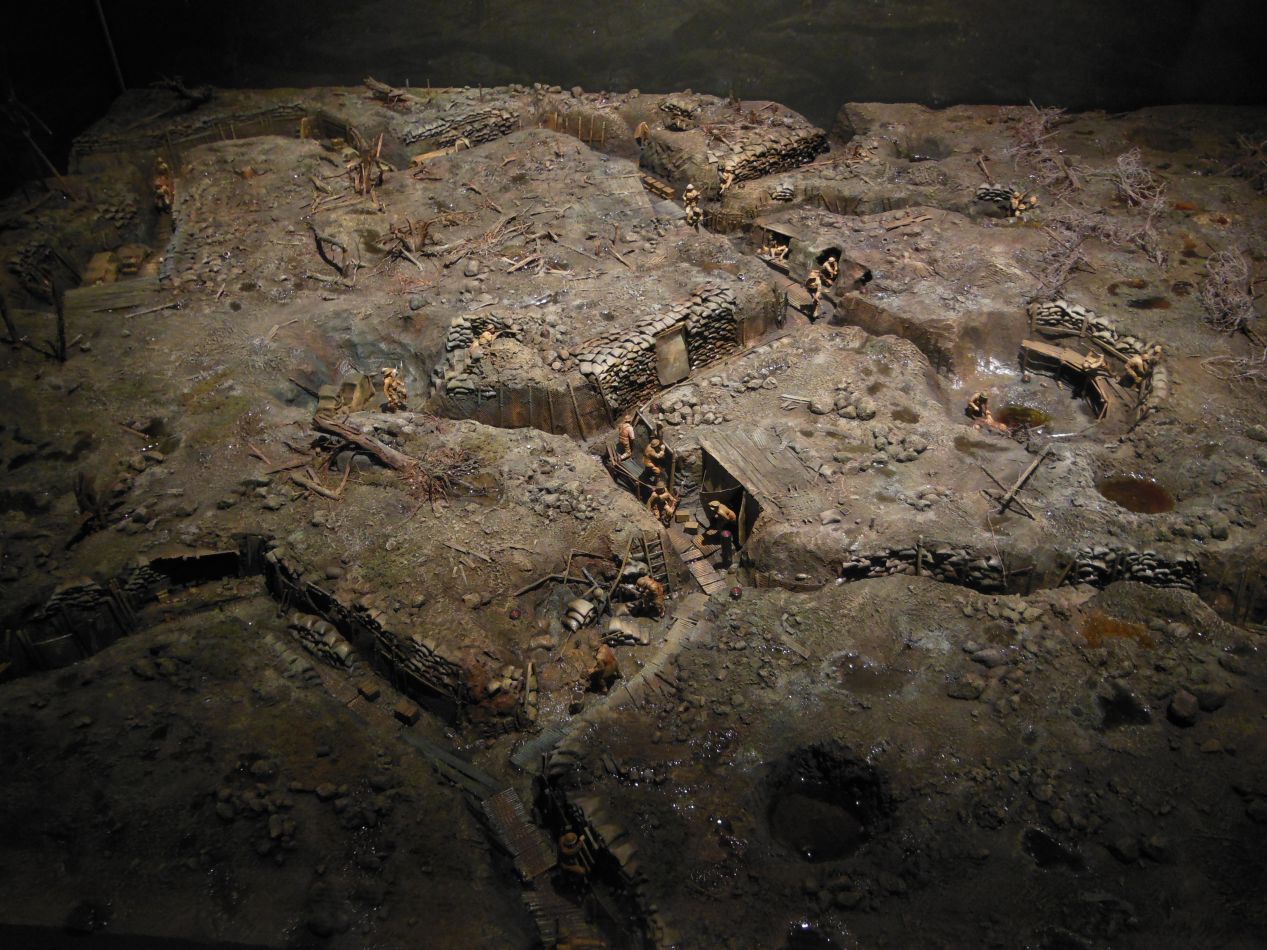


The museum also has an extensive gallery about the experience of Canadians in the Great War (World War I). Unlike the delayed entry of the United States into the conflict, Canada and the rest of the British dominions joined in the war from its outset in 1914. The presentation of weapons and artifacts on the part of the Canadian War Museum was probably the best that I've ever seen when it comes to explaining combat in the Great War. The artillery piece above is an 8 inch howitzer, and for once I'm glad that I captured a random tourist in the background to provide a sense of scale for its size. This thing could throw a 200 pound (90 kg) artillery shell a distance of 7 miles (11 km) away. This is one of the aspects of the fighting that not enough people understand: artillery was the biggest killer, not handheld guns. There was even a sign at the museum correctly stating that 60% of all casualties in the Great War were due to artillery. The other great killer was the machine gun, with the German version pictured above able to shoot 450 shots per minute - that's more than seven per second - at a range of up to a mile's distance. I've used some of these pictures when teaching about the war, and my students were always stunned to hear some of these numbers. These visuals did a lot to help make sense of how the terrible conflict played out.
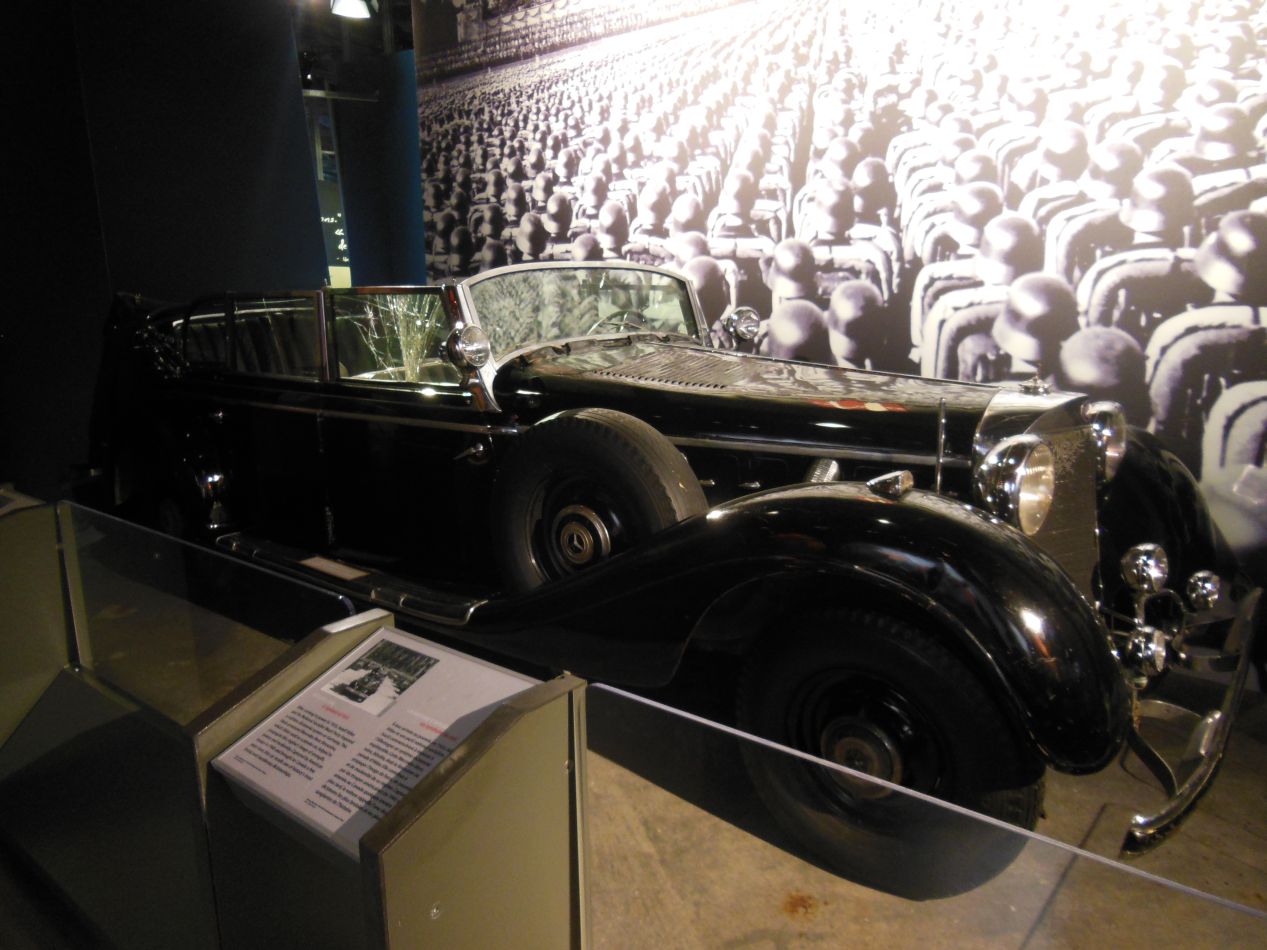


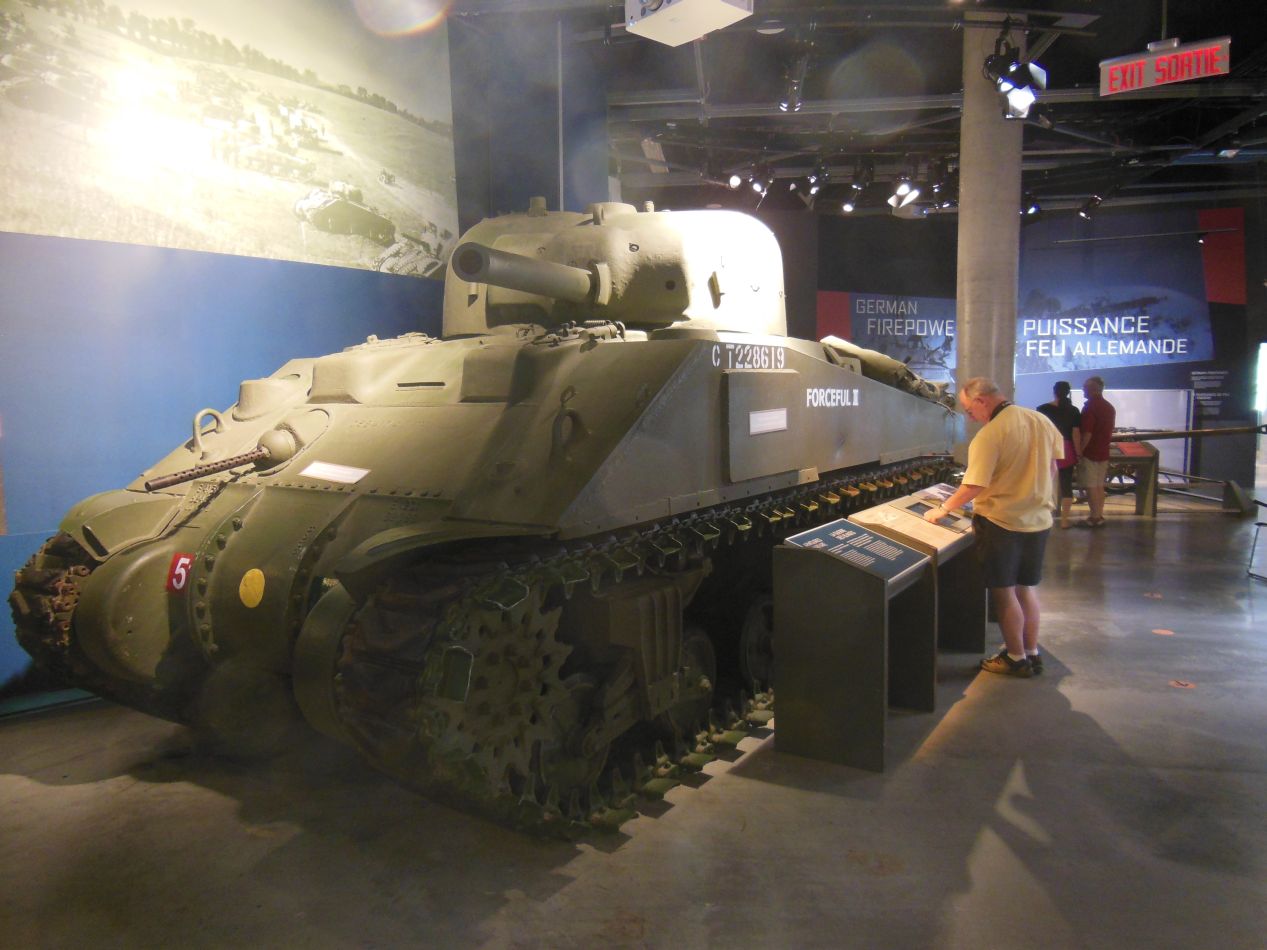
Finally there were the more recent additions to the museum's collection. One of the more interesting items on display was Hitler's automobile, captured by Canadian soldiers in the waning days of World War II. This was a black armored Mercedes Benz limousine, with bullet cracks still marring the passenger side window. There were also a number of modern tanks and artillery pieces even larger than the ones from the early 20th century, as well as a smaller model of the National War Memorial and a shrine dedicated to Canadian veterans. I've been to quite a few military history museums over the years and this one ranks at the top, easily one of the best out there. I strongly recommend this place to anyone who enjoys military history, or simply history more generally.  I stayed longer than I planned and had to race back towards Parliament Hill to ensure I made my tour group.
I stayed longer than I planned and had to race back towards Parliament Hill to ensure I made my tour group.


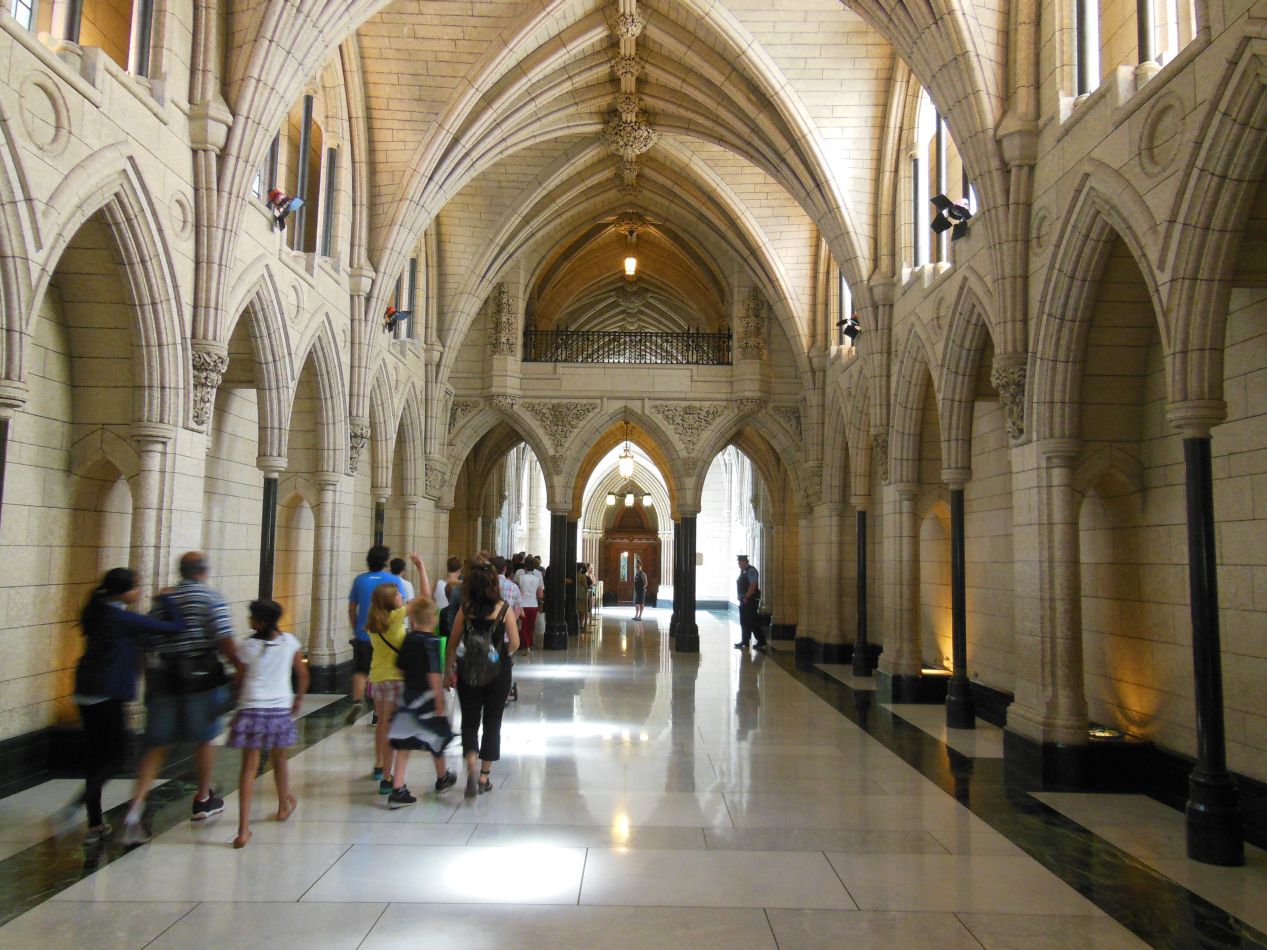
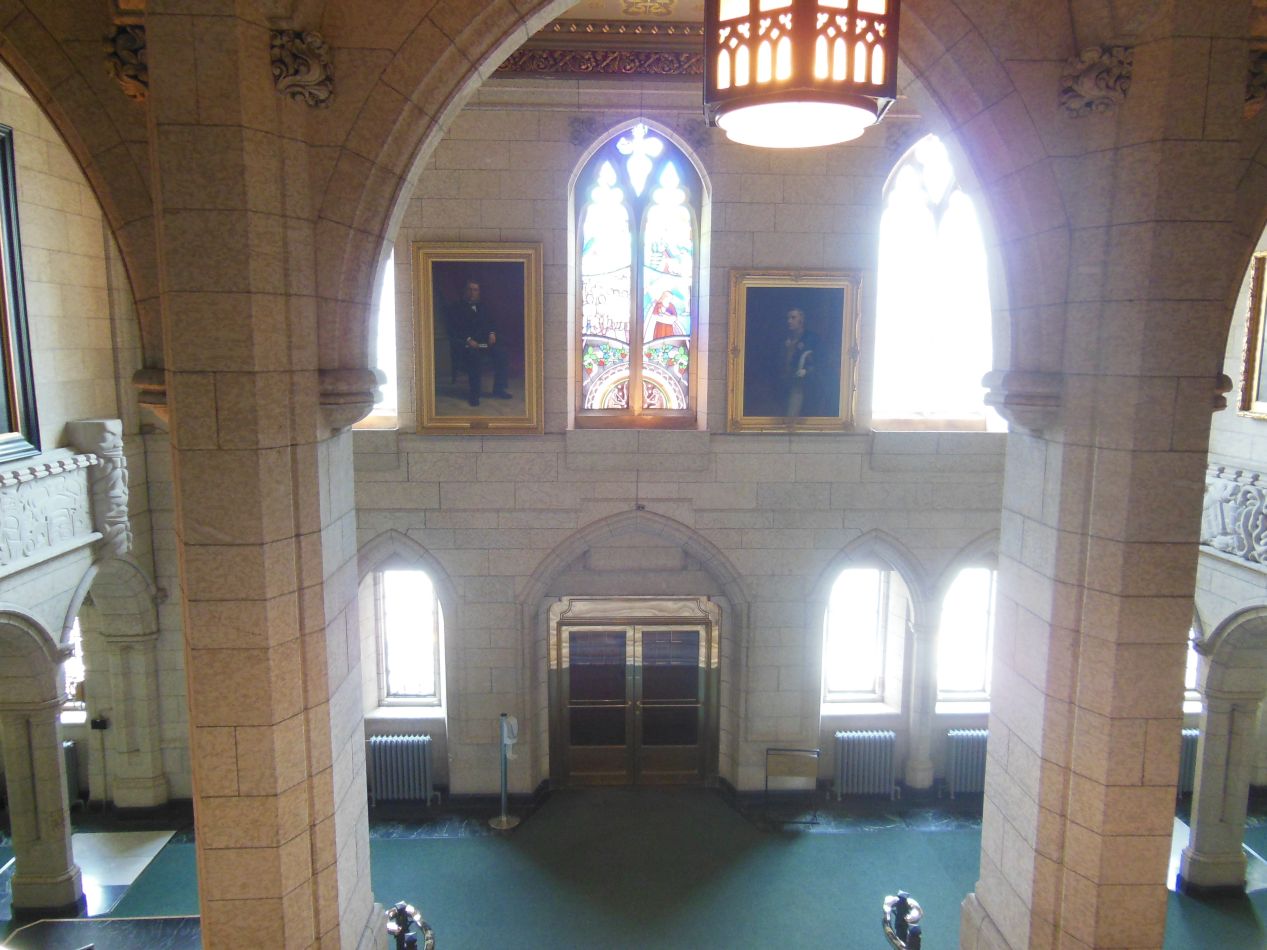
The yoga class had ended and the grass was now empty in front of the Parliament of Canada building. My tour group met at the eastern edge of the Central Block, right next to the obligatory statue of Queen Victoria. We were escorted into the building by our tour guide and shown through the tall, imposing hallways of the structure. The overwhelming impression that I had of this building's Neogothic style was that it felt like walking through a medieval cathedral. The hallways were built out of large stone blocks and generally had the familiar vaulting overhead design for the ceilings. Windows were consistently placed above ground level in the same fashion used in the old cathedrals, while stained glass designs seemed to be everywhere. The interior was also brightly lit from the outside in another callback to the Gothic cathedrals, and there were stone pillars placed for aesthetic reasons even in places where stone pillars didn't seem to be structually necessary. It was a neat effect overall and a fascinating contrast to the Neoclassical design used in the American federal government buildings. This was a legislative body imitating a medieval cathedral instead of a legislative body imitating ancient Greece and Rome.




The highlights of the tour were the two legislative chambers inside the Parliament of Canada. Pictured above is the lower of the two chambers, the House of Commons, which somewhat paradoxically is also the more important body. The Canadian Senate occupies largely the same role as the British House of Lords and holds more of a ceremonial function, with the House of Commons being the true legislative body. The House of Commons had 338 members at the time of writing, although this number can shift depending on how the seats are allocated following each decennial census. Elections are normally held every four years on a first-past-the-post basis in each district, or "riding" as they like to call them in Canada. Like the Legislative Assembly of Ontario that I had visited on the previous day, the national House of Commons was laid out along the British model from the Parliament in Westminster. The seats were arranged in two lines facing one another, one side for the government and one side for the opposition, with the seat at the head reserved for the prime minister. By custom, the British monarch and its direct representatives cannot appear in the House of Commons, so any time the royal family comes to Canada on a state visit, it must take place in the Senate. My favorite part about this room was the stained glass windows with their floral patterns. They made the House of Commons feel even more like a legislative assembly taking place in the nave of a Gothic cathedral.




The other main stop on the tour was the home of the Senate of Canada. This is a smaller legislative body with only 105 members in all. They are not directly elected but instead appointed by the Governor General, the symbolic representative of the British monarch, together in consultation with the Canadian prime minister. Interestingly, these seats are assigned on a regional basis: four regions (defined as Ontario, Quebec, the Maritime provinces, and the Western provinces) each receive 24 seats, with the remaining portions of the country (Newfoundland and Labrador and the three northern territories) assigned the remaining nine seats. The Senate of Canada has a largely ceremonial function, but bills must pass both houses of the parliament to become law, and on rare occasions the Senate has voted down a piece of legislation. This entire body is not very democratic in nature and there have been a number of attempts at reforming it over the years, so far without much changing. The specific room where the Senate meets is informally known as the Red Chamber due to the red color of the carpet and the thrones in the rear. The foremost of these is where the monarch sits when present, and where the Governor General sits on the much more frequent occasions when the sovereign is not present. The overall nature of the Senate was much more lavish than the House of Commons, between the red carpets, the paintings on the walls, and the gilded heraldric symbols on the ceiling. The two of them had a clear contrast that mimicked the design of the Commons and Lords at the British Parliament in Westminster.
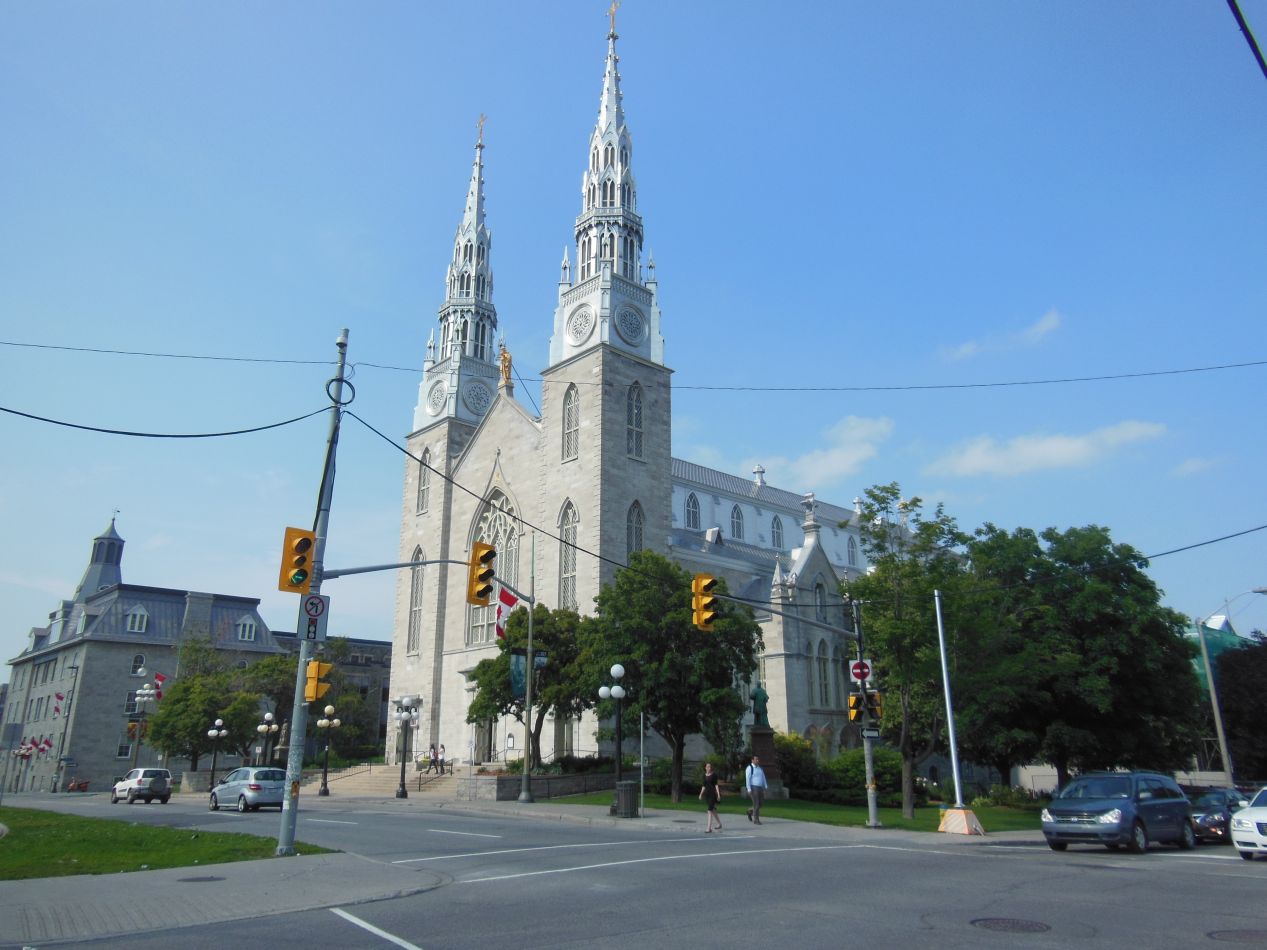



After the tour was over, I began circling around to the east of Parliament Hill with the intention of crossing the bridge over the Ottawa River. En route I came across this house of worship known as Notre-Dame Cathedral of Ottawa. The cathedral is a Catholic structure that dates back to the 1840s and it is the oldest and largest church in the city of Ottawa. Notre-Dame Cathedral was another structure built in Gothic revival architectural style, with some Neoclassical touches at the base of the building that date back to an earlier version of the church. The main impression that I had of this building was that it strongly resembled Notre-Dame Basilica in Montreal on a smaller scale, right down to the same blue-colored pattern of stars on the ceiling. Like many other Catholic churches that I had seen over the years, the interior was ornately decorated with several shrines placed on the sides of the church and dozens of statues of saints ringing the main altar. My favorite thing about this building was the design on the ceiling, and I enjoyed stopping here for a few minutes even though I couldn't shake the feeling that the design was a bit derivative of older churches in Quebec.


I also walked right past the National Gallery of Canada without going inside due to lack of time. This is one of the country's premiere art installations and dates back to the 1880s, with the current building pictured here constructed in 1988. There was additional construction taking place at the northern end of the building when I visited, and the museum decided to cover it up with sheets of plastic designed to look like a melting iceberg. I think that it was meant to be some kind of statement about the environment, I'm not exactly sure. I'm always more interested in historical attractions than artistic ones, and as a result, I tend to skip more art museums in my travels. Unfortunately you can't see everything on a trip.


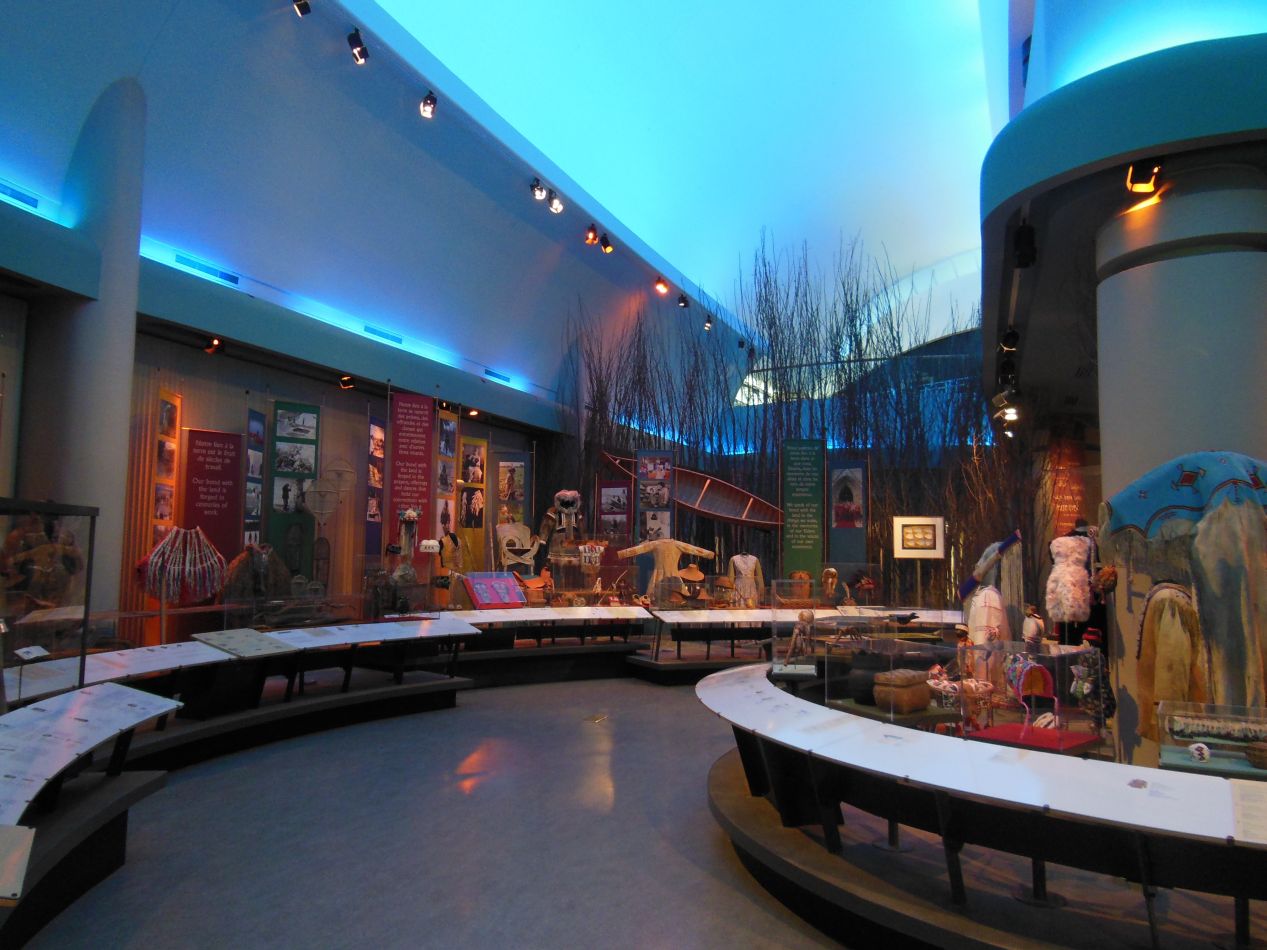

Next I crossed over the Alexandra Bridge to the other side of the Ottawa River, which carried me from Ontario into Quebec. Technically the north side of the river is a separate city named Gatineau and not part of Ottawa at all, although for practical purposes there's little immediate difference. The biggest attraction here was the Canadian Museum of History, or the Canadian Museum of Civilization as it was called at the time in 2013, the national museum of the human habitation of Canada. This museum is a mixture between historical studies and archaeological findings, tracing the story of this part of the world from the First Peoples of Canada up to the present. The Canadian Museum of History is one of the oldest museums in the country and dates back to the 1850s, and more than a million people come to visit the beautiful building in which the collections are housed each year. These initial pictures were taken from one of the permanent exhibits dedicated to the First Peoples of Canada, with this section focused on the peoples of the Pacific Northwest. I've always found this style of art to be fascinating and immediate distinctive from anything else in the world. There was a lot of information here about the original inhabitants of Canada, and all kinds of different artifacts on display. Fascinating stuff.


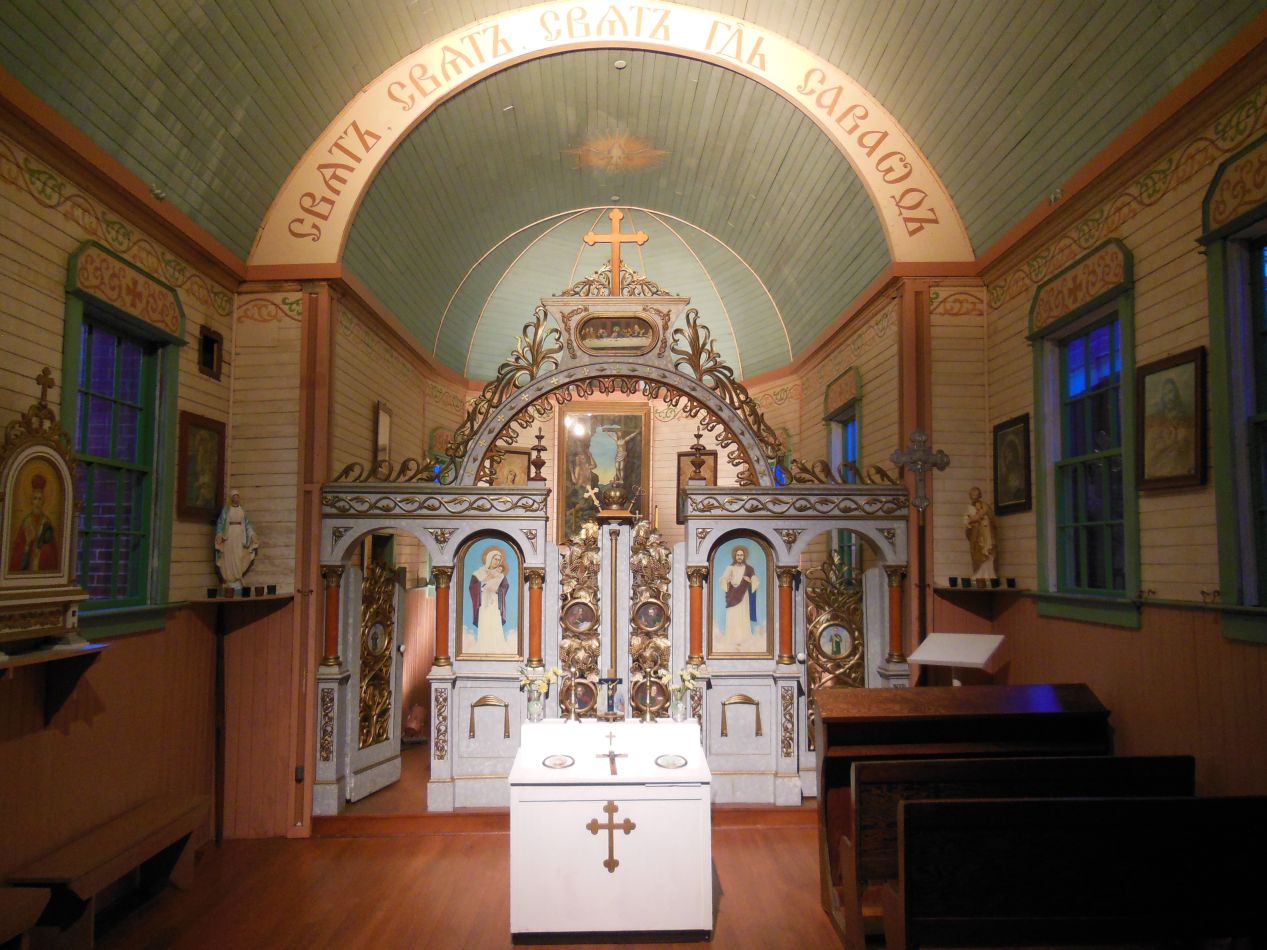

The upper floors of the museum moved forwards chronologically in time, with the largest one being the "Canada Hall" exhibit on the third floor, a permanent gallery dedicated to telling the story of Canadian history from the colonial period onwards. Some of this was done through traditional museum displays, but a large portion of the gallery focused around recreations of different historical settings from the past. There was the interior of an 18th century house in New France, the streets of a small prarie town in the early 20th century, and so on. Then there were the real oddities, like this tiny Ukranian church from Alberta that had been transplanted to the museum, or this bus from the 1960s with strange South Asian-style decorations on it. The top floor of the museum had another permanent gallery about individual Canadian personalities, everyone from Wolfe and Montcalm at the Battle of Quebec to the "Famous Five" suffragettes to the then-current prime minister Stephen Harper. Unfortunately I had to race through the upper parts of this museum because I arrived only an hour before closing time, and I didn't get to spend as long here as I would have liked. This is a really cool museum and worth the trip across the river from Parliament Hill.

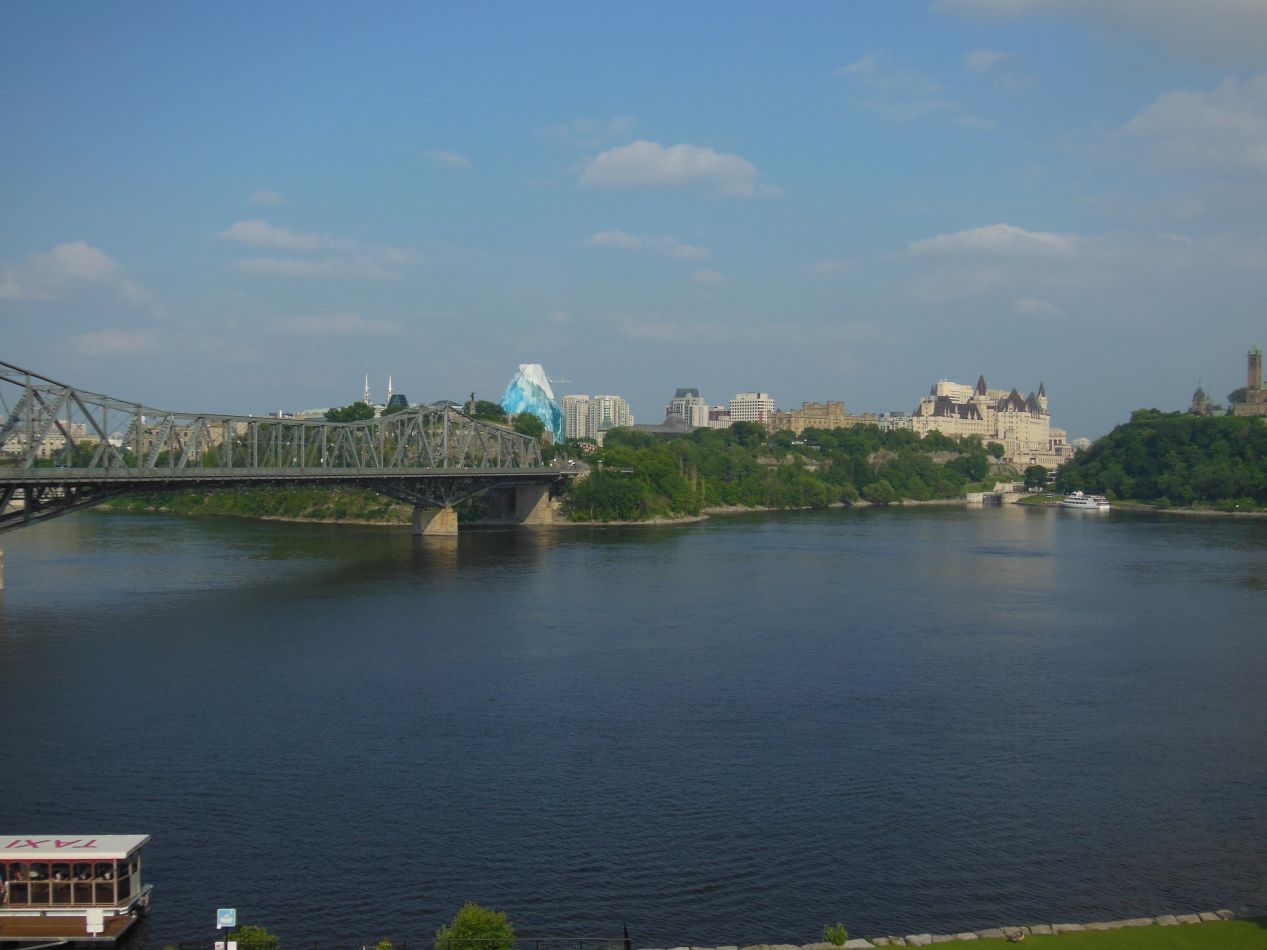
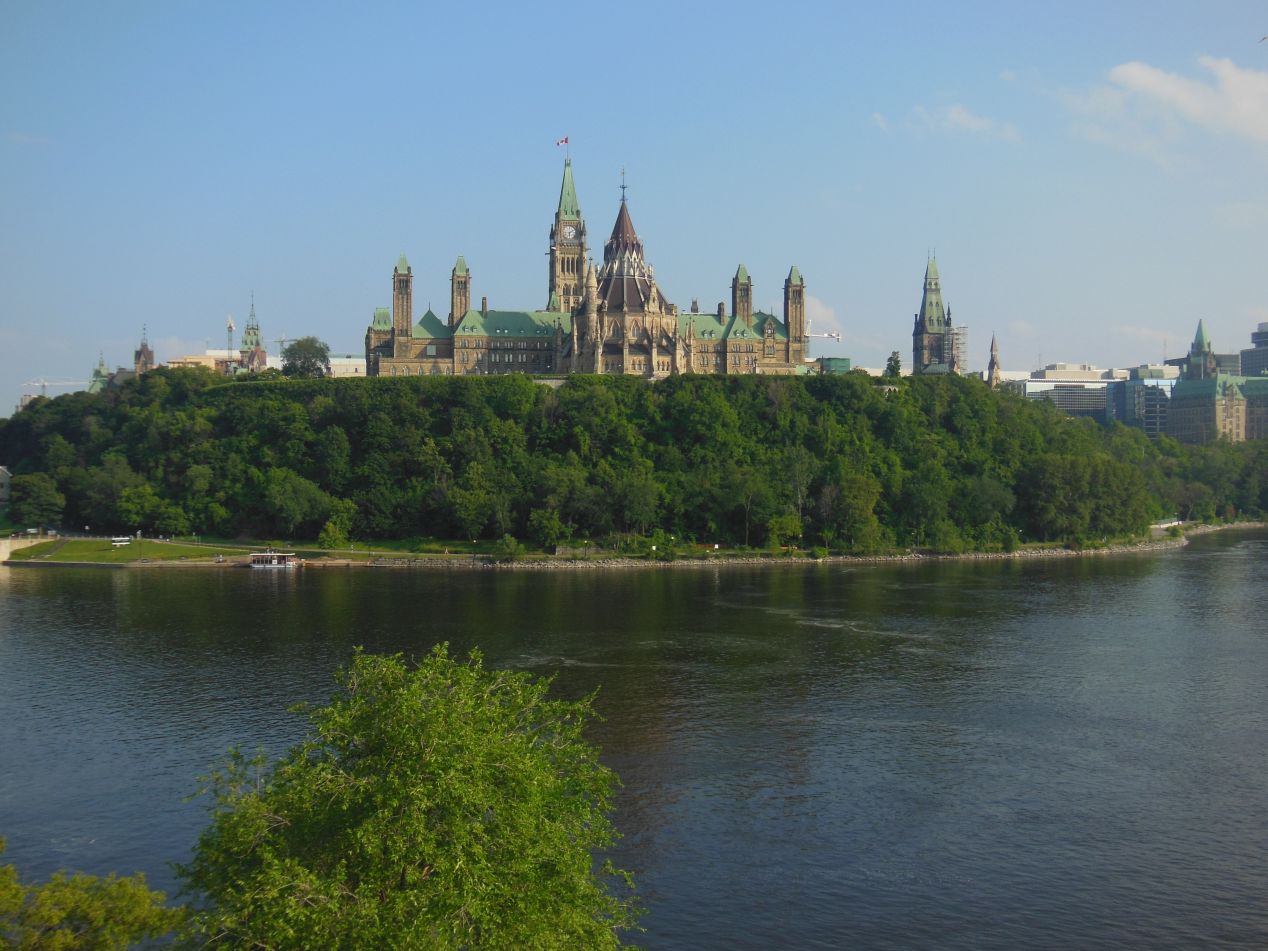

Of course, as someone traveling about for the day on foot, now I had to walk back the way that I had come and cross back over the river again. That was all part of the plan, however, as I had deliberately not stopped to take pictures on the way over to the Canadian Museum of History, knowing that it wouldn't be open too much longer and I could take in the views of the city on the way back. The sun was beginning to set in the west as the day drew to a close, and it bathed the government buildings on Parliament Hill in a soft glow. The Alexandra Bridge was a perfect vantage point to drink in these views of the city with the water of the Ottawa River in the foreground and the castle-like buildings in the distance. There was the National Gallery of Canada with its iceberg sheet covering, and nearby was the ritzy Fairmont Château Laurier hotel. I could also look upriver to the west where there were more highrise buildings in the distance. But the crowning jewel of the city was of course the Parliament of Canada, regalling standing alone at the top of Parliament Hill. That distinctive shape has graced a thousand postcards over the years and it was my favorite image that I managed to capture in Ottawa. I was highly pleased that I had managed to get such a good look at the building from both the interior and exterior.

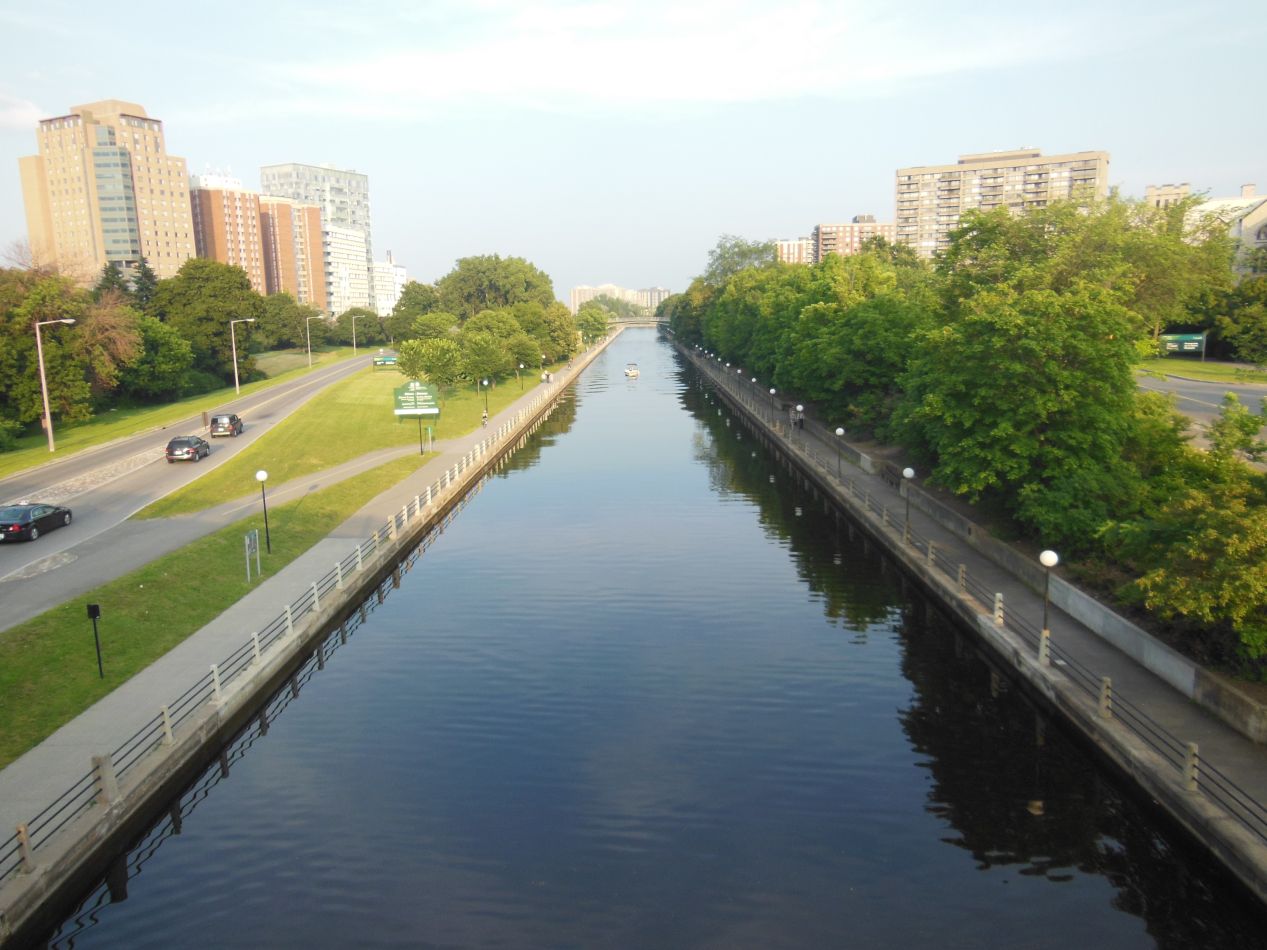
I stopped to eat a quick dinner at this point, some very good noodles from a Chinese establishment. Then it was off to a couple last destinations with the sun still setting in the sky. I checked out nearby Confederation Park and the Ottawa City Hall, which were a bit of a disappointment. The park was deserted and had nothing of interest beyond a recent statue dedicated to the Canadian war veterans descended from First Peoples tribes. The City Hall building was closed by this time of day, and from the outside it looked more like a sporting arena than a municipal government building. What an odd looking design. (The Ottawa Senators, the city's NHL team, play their games in an arena on the outskirts of the city, not here in the center.) At least the Rideau Canal looked pleasant enough in the early evening, running straight as an arrow south from the locks along the river. There were a good number of people walking or biking on the paths that ran along either side of the canal, and the streetlights were just beginning to turn on for the night. It was time for me to head back to my hostel.




I was staying at a place run by Hosteling International that was formerly known as the Carleton County Gaol, with the place today going by the name "the Ottawa Jail Hostel." This building was constructed in 1862 as a prison and located next to the Ottawa courthouse, then served as a jail up until 1972. It was immediately purchased by the hosteling group and converted into a place to stay, with the former cells now used as very unique rooms. The main reason that I chose to stay here was a combination of the location in downtown Ottawa and the dirt cheap cost, but I won't deny that it was interesting to experience a night in this place. The building still looked like a prison from the outside, and the cells where guests stay were, well, about as tiny as one would expect. This was typical hostel lodging with four people to a room, and although there were electric plugs and lights and such inside the rooms, there was no mistaking that this was a former prison cell. Definitely not recommended for anyone who might be claustrophobic. I'm a sound sleeper and I was already exhausted from such a busy day of sighteeing, which meant that I had no trouble nodding off in this strange lace.
That was the end of a memorable day in Canada's capital city. Next I would be traveling downriver to the largest French-speaking city in Canada, the cosmopolitan mecca of Montreal. It was going to be another busy day trying to see as much as possible in less than 24 hours of travel time.



